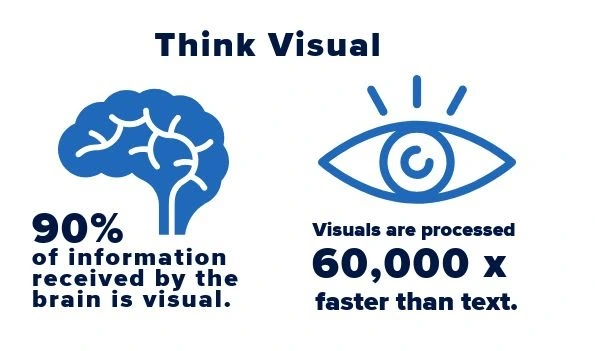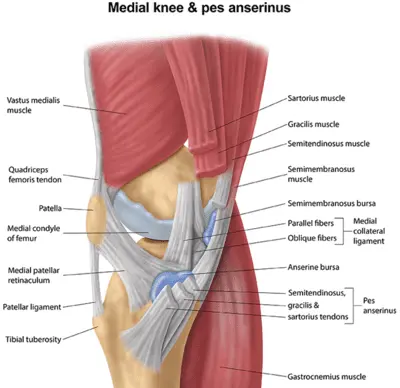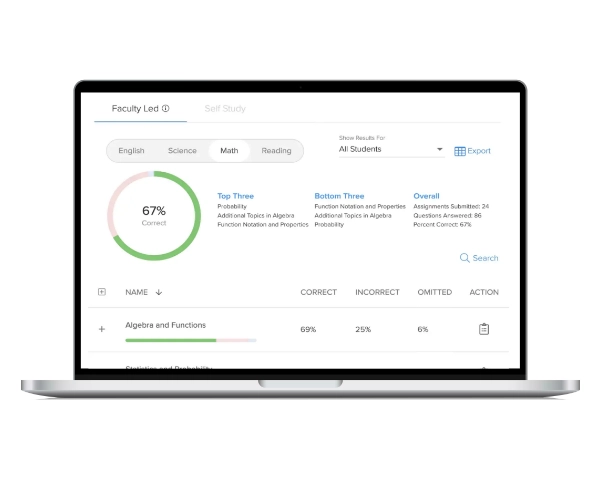We set the bar for premium online learning and high-stakes exam prep. Whether you’re aiming for top scores on your nursing entrance exam or working toward a professional license or certification, our proven approach provides high-quality, engaging content to help you reach your goals. This focus on concept mastery — anchored in active learning — is The UWorld Difference.
What Is Active Learning?
Active learning is a hands-on study approach designed to help you truly master the concepts tested on high-stakes exams. Rather than passively sitting through lectures, you actively engage with the material — an approach research shows can significantly enhance learning outcomes. The Neuroscience of Active Learning1, for instance, points to improved student performance with interactive teaching styles, and studies from Cornell University present strong reasons to embrace active learning in any educational setting.
We’ve woven these findings into all our exam prep products. By having you work through real exam scenarios and apply knowledge in meaningful ways, we make studying more engaging, reduce the last-minute rush to memorize facts, and equip you for success well beyond exam day.
How Does Active Learning Work?
Active learning is a well-rounded study method that blends strategic thinking, problem-solving, and real-world application to help you master nursing exam content. Combining techniques such as spaced repetition and active recall gives you a deeper understanding and longer retention. This approach moves beyond memorization, empowering you to confidently apply your knowledge and thrive on your exams and in future practice.
1. Learn by Doing
Active learning is all about jumping in and practicing until concepts really stick. That’s why each of our QBanks offers a large pool of questions you can use to build unlimited practice tests that mirror the real exam. Our content is written at or above the difficulty level you’ll face on test day, so repeated practice boosts your confidence and helps you master challenging material. By simulating the actual testing experience, you’ll build the stamina and familiarity you need to feel ready and relaxed when exam day finally arrives.
2. Focus on What Truly Matters
Staying organized and zeroing in on what truly matters are other important aspects of active learning. It’s easy to become overwhelmed trying to figure out which topics deserve your attention and how much is enough. It can get even more complicated if you’re juggling multiple study resources or prep courses that might not be necessary. That’s where we make the difference. Our NCLEX-RN®, NCLEX-PN®, ANCC® and AANP® FNP, and Clinical Med Math QBanks let you customize practice tests and immediately review your performance so you can concentrate on the subjects you need the most and avoid burnout. By targeting your weaker areas and steadily building on your strengths, you’ll make the most of your study time and maintain your momentum all the way to exam day.
3. Keep It Simple
It’s tough enough tackling exams that demand hundreds of hours of study, so we make sure our active learning process stays straightforward and easy to follow. We design our products to clarify — rather than complicate — complex subjects. That means concise, in-depth answer explanations and vivid visuals that simplify tough concepts, increase retention, and guide you to real understanding. We break down correct and incorrect answer choices so you’ll grasp the bigger picture and minimize rote memorization. Ultimately, we aim to help you build genuine mastery instead of simply cramming, ensuring you have the critical thinking skills you need for success on exam day and beyond.
Why Active Learning?
1. Improves Student Outcomes
The University of Minnesota’s Center for Educational Innovation points to well-established evidence supporting active learning.2 Research shows that when learners are hands-on and fully engaged, they develop stronger critical thinking skills, retain more information, stay motivated, improve their interpersonal abilities, and experience fewer course failures.3 The National Survey of Student Engagement reinforces these findings, reporting that students from more than 1,600 colleges and universities benefit from interactive, collaborative activities that boost academic performance and personal growth.4
2. Supports Visual Learning
The saying “a picture is worth a thousand words” holds true. One study suggests that using visual aids in education can improve learning.5 Another study found that after 3 days, people tend to retain only 10-20% of written or spoken information but remember nearly 65% of visual information.6 According to Dr. Lynell Burmark, an education consultant and author on visual literacy, “Unless our words, concepts, and ideas are hooked onto an image, they will go in 1 ear, sail through the brain, and go out the other ear. Words are processed by our short-term memory, where we can only retain about 7 bits of information. … Images, on the other hand, go directly into long-term memory where they are indelibly etched.”7
We’ve embraced this idea in every QBank we create. Each 1 features vivid images, illustrations, charts, graphs, diagrams, and more created by our in-house experts. These visuals pair seamlessly with our detailed answer explanations so you can truly grasp the concepts being tested.
3. Maximizes Retention
Active learning — which emphasizes practicing rather than just listening — helps you remember more than passive learning. That’s why each of our QBanks contains thousands of questions you can tackle repeatedly that are organized by specific topics or subjects to create customized tests that mimic the real exam. By repeatedly working through these practice questions and reviewing detailed answer explanations, you’ll deepen your understanding and boost the retention of essential concepts.
The research is clear: Active learning helps you truly absorb high-yield concepts. That’s why all our exam prep products deepen your understanding rather than relying on tips or tricks. Much like training for a high-level competition, how you practice for your high-stakes nursing exams is ultimately how you’ll perform. By repeatedly answering questions in exam-like conditions, the actual test day will feel like a natural extension of your preparation.
Ready to see it for yourself? Try UWorld and experience active learning the way it’s meant to be.
References
- Andreatta, B. (n.d.). The neuroscience of learning.
Retrieved from https://www.brittandreatta.com/the-neuroscience-of-learning/ - University of Minnesota, Center for Educational Innovation (n.d.). Active learning.
Retrieved from https://cei.umn.edu/active-learning - Prince, M. (2004). Does active learning work? A review of the research. Journal of Engineering Education, 93(3), 223–231.
- Kuh, G., O’Donnell, K., & Schneider, C. (2017). HIPs at ten. Change, 49(5), 8–16.
- [PDF document]. (n.d.). Retrieved from https://files.eric.ed.gov/fulltext/EJ1079541.pdf
- Active learning. (n.d.). In Changing Minds.
Retrieved from https://changingminds.org/explanations/learning/active_learning.htm - [ERIC document]. (n.d.). Retrieved from https://eric.ed.gov/?id=ED461850
- Cavenagh, S. (2016). The spark of learning: Energizing the college classroom with the science of emotion. Morgantown, WV: West Virginia Press.
- Freeman, S., Eddy, S.L., McDonough, M., Smith, M.K., Okoroafor, N., Jordt, H., & Wenderoth, M.P. (2014). Active learning increases student performance in science, engineering, and mathematics.
- Proceedings of the National Academy of Sciences, 111(23), 8410–8415.
- Henning, J.A., Ballen, C.J., Molina, S.A., & Cotner, S. (2019). Hidden identities shape student perceptions of active learning environments. Frontiers in Education, 4, 129.
- Owens, D., Sadler, T., Barlow, A., & Smith-Walters, C. (2017). Student motivation from and resistance to active learning rooted in essential science practices. Research in Science Education.








